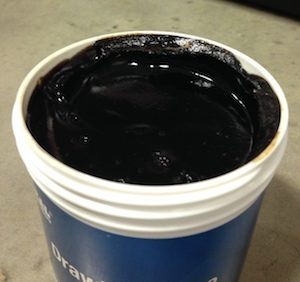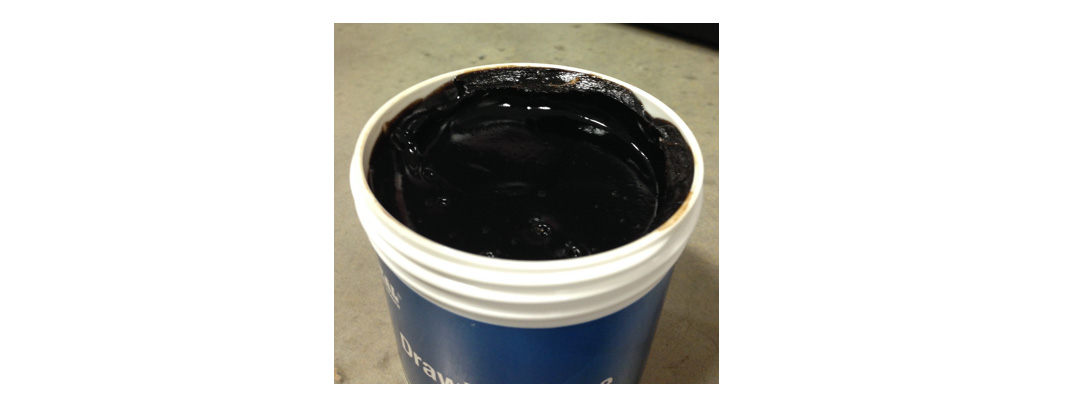The Wonder Ointment
by Eleanor Blazer

Several million years ago horses grazed on plants that would become the basis of an amazing ointment. Known as icthammol, black ointment, or drawing salve, it is used to treat wounds, skin conditions and abscesses affecting descendants of these early horses.
Icthammol ointment is derived from sulfur-rich oil shale, a type of rock which is made up of organic material. After being mined and distilled, the resulting substance is dark reddish- brown to black color with a tar-like odor.
The anti-inflammatory, anti-bacterial, and anti-fungal properties of icthammol offset its appearance and smell. Icthammol can be used to treat minor cuts or abrasions, rain rot, insect bites, scratches (mud fever, greasy heel), and sunburn. Applied down the midline of the underbelly it can help protect the sensitive area from insects, while soothing the itching and treating the bites. Water soluble, it can be washed off easily, though the smell can linger.
The most recognized use is as a drawing salve. Icthammol helps soften the tissue, reduces swelling and increases blood circulation, which may aid in the “drawing” of the infection or splinter. It is often used to help draw an abscess out of a hoof.
Regarding safety, the U.S. Department of Health and Human Services National Toxicity Program states ammonium sulfobituminate (icthammol) has no toxicity levels.
When compared to wound medications containing nitrofurazone, icthammol is safer for both the horse and caretaker. Nitrofurazone has been shown to create carcinogenic activity in mice, resulting in the United States Food and Drug Administration (FDA), and the Bureau of Veterinary Drugs in Canada to require labeling stating nitrofurazone must not be used on animals intended for food. Nitrofurazone products also have cautionary statements on the labels stating some people may have adverse reactions to the ointment, and gloves should be worn.
When purchasing icthammol beware of look-alike products. If the ointment lacks the strong bituminous tar-like smell it is not icthammol. The ingredients will probably be vegetable based.
Also avoid products called “black salve” (Cansema). These products may contain bloodroot, crushed ash, chaparral, DMSO (dimethyl sulfoxide – an industrial solvent) and other ingredients. Often advertised as a cancer treatment, the FDA has banned the sale of black salve for that purpose. These products can be caustic, resulting in bad burns and scarring.
Despite the name confusion — black ointment, drawing salve or icthammol – every equine medicine chest should have a jar. In time, you and your horse will learn to love the smell!
©2017
* Take the online course “Horse Health and Disease” taught by Dr. Jack Sales. Earn certification or work toward a Bachelor of Science degree in Equine Studies. Go to www.horsecoursesonline.com for more information.
Originally Published February 2017 Issue

Eleanor Blazer was raised training and caring for horses. She learned to ride and care for the horses her family bought and sold. Many of these horses required improved nutrition when they arrived for training. Eleanor’s experience and research has benefited both horses and horse lovers in the field of equine nutrition. An equine nutrition consultant, based in Bulverde, Texas, she keeps busy doing equine nutrition consultations, conducting seminars, and speaking to youth groups about horse care and nutrition. Eleanor is the author of the syndicated column The Way of Horses. She has more than 20 years experience helping and being a mentor to those wanting to know how to provide the very best care and nutrition for our special friend – the horse.






